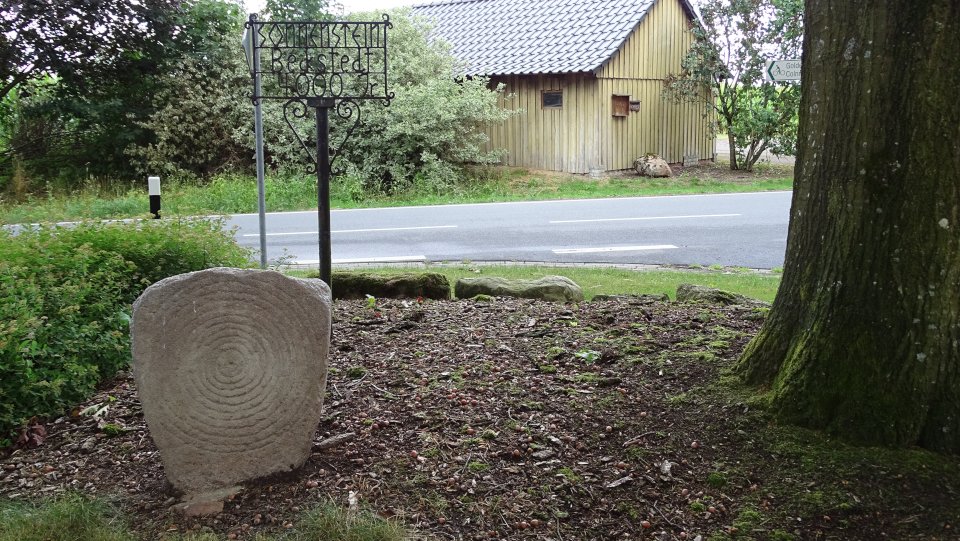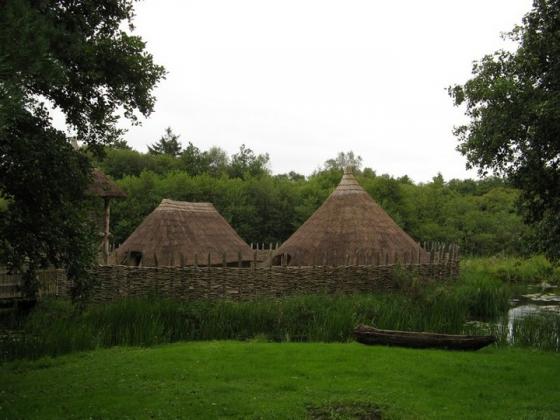
Visited July 2018

Visited July 2018

Visited July 2018

Visited July 2018
Unfortunately, there is only a very good copy of the sun stone in Beckstedt since 1955, since the sun stone is now in the Bremen Focke Museum.
The stone is about 90 cm high and 40 cm deep and consists of red granite. On it are eleven concentric circles and a central cup-shaped notch whose meaning is still unknown. Similar circular motifs can be found on stones in Ireland, Scotland and Scandinavia. The original stone was found in the early 20th century when demolishing a farmhouse in the foundation.
Visited July 2018
taken from the “Faszination Archäologie” information board:
Sonnenstein
Red granite about 90 x 40 cm
In 1921 there was a sensational discovery in Beckstedt: the discovery of one of the rare, presumably attributable to the Bronze Age “sun stones”. The special feature of the flat Beckstedter foundling consists of eleven concentrically arranged, enigmatic circles that enclose a notch in the center. So far, neither an exact dating, nor a scientifically sound interpretation of the original function of the “sun stone” could succeed.
For some time now the hypothesis exists that the incorporated motif is a sun depiction, which is why the foundling is also called the “sun stone”. Nevertheless, all previous interpretations – such as those discussed in the context of Bronze Age cult acts or pre-Christian burial customs – lack any scientific basis.
The Beckstedter “Sonnenstein is now in the Bremen Focke Museum. On site you see a copy.

















































